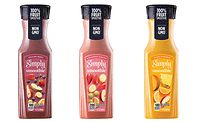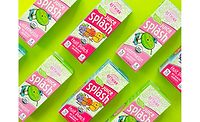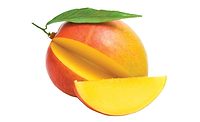Domestic, exotic fruit formulations provide benefits
Consumers continue to view fruits as clean label

The “healthy halo” mantra certainly has gained traction within the beverage marketplace in recent years. As consumers continue to look for functional beverages that deliver health benefits and a clean label, they also seek out ingredients that deliver on taste. Beverage-makers are recognizing these trends and incorporating domestic and exotic fruits in their formulations to give consumers healthy benefits along with great taste.
Familiar fruits like blueberries, pomegranates and grapes commonly are seen on store shelves, while exotic fruits like dragon fruit, passionfruit and citrus varietals are becoming more popular beverage ingredients.
Fruit juices have a very well-known health halo and consumers continuously look to fruit juices for health benefits like immunity, vitamin content and overall well-being, notes Kristen Farr, marketing and innovation manager at iTi Tropicals, Lawrenceville, N.J.
“The beverage category is getting more and more complex with the super-premium juice (SPJ) category continuing to grow and new players coming into the space,” says Adam Cooper, vice president of marketing at Los Angeles-based The Wonderful Co. “Consumers are looking to try beverages that deliver functional benefits but are still looking for clean labels and great taste.”
Cooper touts the health and flavor benefits of the company’s 100 percent pomegranate juice. The pomegranate delivers on health factors because of its antioxidant content, without sacrificing flavor, he says.
Tom Payne, industry consultant to the U.S. Highbush Blueberry Council, San Mateo, Calif., also points to the healthy draw of consuming fruit beverages and blueberry beverages in particular. “The most important and influential trend is undoubtedly the current trend for healthy eating, which is [one] reason that blueberry beverage development has been enjoying a particular surge in popularity,” he says.
“Blueberries and fruit in general have a positive image among consumers who consider fruit an almost-guiltless ‘right choice,’” he continues. “With their fresh burst in the mouth flavor and healthy profile, blueberries give products lush taste, broad appeal and clean labels.”
Beverage-makers are utilizing diverse fruits to differentiate their products on store shelves, experts note. “Increasingly, the provenance of domestic fruit is adding a new dimension to beverages, with varietal differentiation now a popular strategy [to] stand out,” says Greg May, business development manager at Concord, Mass.-based Welch’s Global Ingredients Group. “Blood oranges, Meyer lemons and of course, Concord and Niagara grapes can all be seen on-shelf in the fruit beverage category.”
May explains how the origin of fruit ingredients resonates with consumers. “This level of extra detail about the origin of the beverage appeals in particular to conscientious shoppers with sufficient disposable income to trade up from commodity options,” he says.
Additionally, the rise of fermented and vinegar-base beverages like kombucha can utilize different domestic and exotic fruits. “Sour flavors are on trend right now, as demonstrated by the rise of kombucha and vinegar drinks,” May explains. “Key to growth is to achieve a balance between creating something that delivers a point of difference, but is also palatable enough to sustain repeat purchases.
“Harnessing fruit juices in these formulations can be an effective way to hit that sweet spot,” he continues. “To graduate beyond the novelty factor and maintain their popularity in the long term, kombucha and vinegar drinks must deliver on taste, and the addition of fruit juices to a formulation can help achieve this.”
The sweet spot
A wide array of domestic and exotic fruits constantly are being used in the beverage market. Domestically, utilizing blueberries in beverages remains quite popular. “Blueberries are making the scene in a realm of juices, teas, sports drinks, smoothies and other beverages that make the claim for antioxidants,” the Highbush Council’s Payne says.
“Blueberries help ease consumers into an adventurous flavor profile because they work well in flavor combinations with spices, botanicals, floral, citrus and herbaceous; they complement and enhance as well as balance flavors,” he adds.
Although domestic fruits can be a way to “play it safe,” Welch’s May warns that it can be difficult for new fruits to enter the market as it can be quite static in terms of trends. “We're not seeing [much] else break into the space besides these ‘big’ four — orange, apple, grape and cranberry,” he says.
On the other hand, the exotic fruit market is gaining some new players. “In the exotic juices category, we’ve observed new launches that include dragon fruit (pitaya), yuzu and varietal citrus,” May explains. “These niche fruits offer a way of creating excitement through novel blends and limited editions. But many exotic fruits arrive with a bang and then disappear from the shelves, so it’s hard to say which of them we will still be talking about in five years’ time.”
iTi Tropical’s Farr also highlights the emergence of dragon fruit. “Dragon fruit is showing momentum, not only does it offer an exciting name from a marketing standpoint, its characteristic natural neon pink color is hard to beat,” she says.
Additionally, increased awareness about passionfruit is helping the exotic fruit be incorporated into more beverage formulations. “Passionfruit, while continuing to gain popularity, is still making its way as the main flavor in beverages,” Farr explains. “It has a sweet yet tart flavor that pairs nicely with more familiar fruits like apple and grape.”
Farr also points to the persistent popularity of pineapple and mango and their ability to complement other exotic flavors. “Well-established tropical flavors like pineapple and mango are often used as the main flavor while newcomers like guava and passionfruit are often used as complementary to more recognizable flavors,” she says.
Historically, pomegranate has been viewed as an exotic fruit and continues to be one of the most popular for consumers looking to experiment with new flavors, The Wonderful Co.’s Cooper notes. Pomegranate juice resonates well with the health-conscious consumer as it contains potential benefits including improved sports performance, memory and cognition, gut health and more, he adds.
Reliable sources
Before formulating with domestic and exotic fruits, beverage-makers should be aware of several associated challenges such as cost and sourcing. Some domestic fruits are expensive, and commodities like orange, apple, grape and pear aren’t necessarily domestic, as they also can be imported, iTi Tropical’s Farr notes. However, issues beyond price also can emerge when working with exotic fruits. “Overall cost is one aspect,” she says. “… But quality, safety and making a product consumers will buy and love are the most important.
“Using tropical fruit juices in combination with commoditized fruits, allow for products with added value and benefits,” she continues.
Welch’s May also notes the challenges of using exotic fruits within beverages. “With exotic fruits, creating new and interesting flavor concepts is easy, but the reality isn’t always as straightforward,” he says. “For one thing, obtaining a secure, reliable supply of new raw materials takes time to develop, and there also has to be a market for that fruit.”
The healthy-halo trend in what people are consuming will continue to drive the fruit juice category, experts say. “In the future, consumers will continue to demand transparency across the supply chains,” May says. “Reputable, high-quality suppliers of fruit ingredients are vital to juice beverage manufacturers’ ability to deliver this expectation.”
iTi Tropical’s Farr notes how the demand for new and unique flavor combinations also will drive the category. “Caribbean flavors are becoming popular and more mainstream like coconut, guava, mango, passionfruit and papaya,” she says. BI
Looking for a reprint of this article?
From high-res PDFs to custom plaques, order your copy today!






